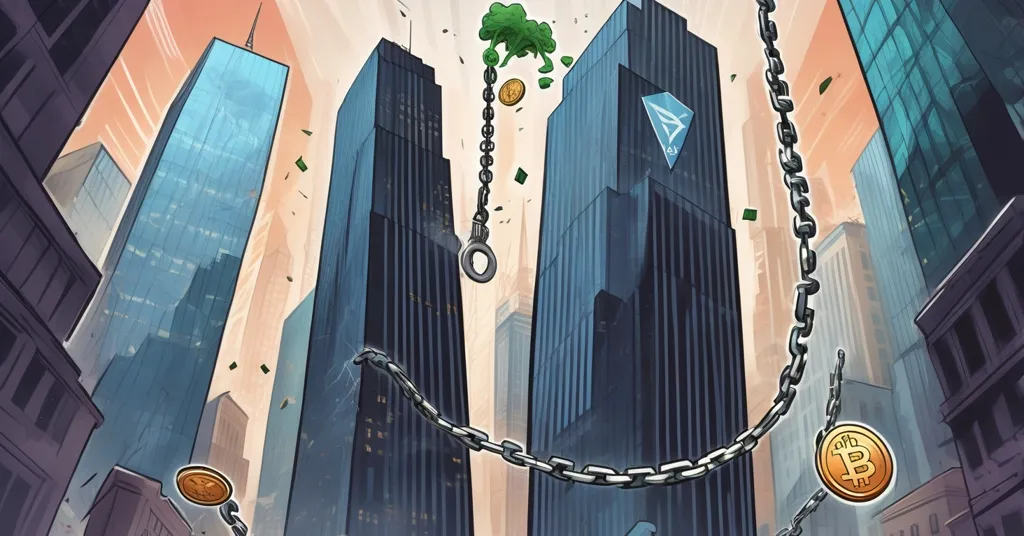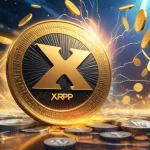Grayscale Updates XRP Spot ETF Filing with SEC, Eyes NYSE Arca Listing

XRP Spot ETF Filing Update: Grayscale Pushes for SEC Approval on NYSE Arca
Grayscale, a titan in the crypto asset management world, has just dropped a bombshell with an updated amendment filed to the United States Securities and Exchange Commission (SEC) for an XRP Spot Exchange-Traded Fund (ETF). This move reignites hope for mainstream adoption of XRP, the controversial altcoin tied to Ripple, and has the crypto community buzzing with anticipation of a potential game-changer.
- Grayscale sharpens its strategy with a revised XRP Spot ETF filing to the SEC.
- Speculation mounts over a possible approval by November 13, fueling community hype.
- Proposed listing on NYSE Arca under ticker GXRP could unlock massive institutional investment.
- XRP ETF regulatory challenges remain a steep hurdle amidst ongoing legal battles.
Grayscale’s Latest Move: A Bold Step Forward
Grayscale’s updated filing isn’t just a formality—it’s a calculated push to refine their approach and meet the SEC’s stringent standards. Established under Delaware law, their proposed XRP trust aims to list on NYSE Arca with the ticker symbol GXRP, offering investors a way to track XRP’s market value through shares without directly holding the digital asset. The structure allows for cash deposits and withdrawals through Authorized Participants (think banks or financial firms that create or redeem ETF shares), while third-party Liquidity Providers ensure smooth trading of XRP behind the scenes. This setup is designed to bridge the chaotic frontier of digital trading with the structured world of traditional finance.
This filing lands at a critical moment. The SEC is expected to decide on several XRP ETF applications soon, following a wave of similar pushes for altcoin funds like the Solana Spot ETF. Grayscale isn’t alone in this race—multiple firms are betting on XRP’s potential to attract institutional money—but their persistence, as seen in their recent XRP ETF amendment filing, signals a belief that regulatory barriers are surmountable, even for an asset as contentious as XRP.
Understanding XRP and Spot ETFs
For those new to the crypto game, let’s break it down simply. An Exchange-Traded Fund (ETF) is like buying a ticket that tracks the price of gold without owning the actual metal—it’s a financial product traded on stock exchanges that mirrors an asset’s value. A Spot ETF specifically follows the real-time price of that asset, in this case, XRP, the native cryptocurrency of the Ripple network. XRP was designed to facilitate fast, low-cost cross-border payments, a niche distinct from Bitcoin’s primary role as a store of value. If approved, an XRP Spot ETF would let investors gain exposure to its price swings without navigating the often-unregulated swamp of crypto platforms, a major draw for cautious institutional players.
Regulatory Roadblocks: The Ripple-SEC Quagmire
Here’s where the rubber meets the road: the SEC has been a thorn in crypto’s side for years, and XRP has been caught in a particularly nasty legal fight since 2020. The core dispute is whether XRP is a security—akin to a stock, requiring heavy regulation—or a currency like Bitcoin, deserving lighter oversight. A partial win came for Ripple in July 2023 when a court ruled XRP isn’t a security in secondary market sales, but the broader question lingers in regulatory circles. This unresolved baggage could tank Grayscale’s filing, no matter how polished, as the SEC often cites investor protection and market manipulation fears when stalling crypto products.
The stakes are high, and history isn’t exactly on XRP’s side. The SEC has dragged its feet on numerous altcoin-related approvals, often leaving projects in limbo. While Bitcoin and Ethereum Spot ETFs have broken through—Bitcoin’s January 2024 approvals alone saw over $10 billion in inflows within months—XRP’s legal shadow may limit its appeal. Could it follow Bitcoin’s lead if approved, or is the baggage too heavy? That’s the million-dollar question.
Community Hype vs. Hard Reality
The crypto community, ever hungry for the next big thing, is practically frothing at the mouth over this filing. Voices like John Squire are fanning the flames with bold declarations:
“The walls are closing in, and mainstream adoption is inevitable” for XRP.
Another enthusiast, Ripple Bull Winkle, has even pegged November 13 as the magic date for approval, hyping it up with dramatic flair:
“The wait is over, the floodgates are opening… institutional capital is about to pour into the altcoin in an unprecedented manner.”
Let’s cut through the noise—bold claims about November 13 are just hot air without SEC confirmation. Predictions like these fuel excitement but are a gamble, not a guarantee. We’re not here to peddle unfounded hype or shill altcoin investment dreams. The harsh reality is that approval is far from certain, and pinning hopes on unconfirmed timelines is a fool’s errand. If the SEC says no, or even delays, the disappointment could ripple through XRP’s market faster than a bad tweet.
Broader Implications for Crypto: A Double-Edged Sword
Now, let’s toss a grenade into this hype fest and ask: what if the ETF actually gets approved? On the bullish side, an XRP ETF could be a seismic shift. Institutional funds often stabilize volatile assets, potentially taming XRP’s notorious price rollercoaster and drawing in conservative investors who’ve dodged crypto’s rough edges. Bitcoin ETFs proved this—massive inflows post-approval showed Wall Street’s appetite for regulated crypto exposure. An XRP win could also pave the way for other altcoin ETFs, further blending decentralized tech with traditional markets, a step toward the disruption of outdated financial systems we champion.
But there’s a dark side. ETFs, by design, layer on intermediaries and regulatory oversight, which clashes with crypto’s core promise of decentralization. Hardcore Bitcoiners might scoff at XRP’s ETF push, arguing it’s just another centralized altcoin begging for Wall Street’s blessing—far from the financial sovereignty Bitcoin offers. And let’s not forget XRP’s ties to Ripple, a company often criticized for its centralized control over the asset. Does an ETF advance freedom and privacy, or just trade one set of gatekeepers (crypto exchanges) for another (regulated brokers)? It’s a tension worth chewing on.
Zooming out, XRP’s role in the altcoin ecosystem stands out compared to competitors like Stellar (XLM), which also targets cross-border payments. Where Bitcoin reigns as the unassailable king of decentralization and store-of-value, XRP fills a niche with real-world utility—Ripple’s tech powers faster, cheaper international transfers, a use case Bitcoin doesn’t aim to tackle. Even Bitcoin maximalists, like myself, have to admit altcoins can carve out spaces BTC doesn’t touch, though I’d argue they’ll never match Bitcoin’s network security or ethos of pure freedom.
Key Questions on Grayscale’s XRP ETF Push
- What does Grayscale’s updated filing mean for XRP’s future?
It signals a relentless drive to meet SEC standards and bring XRP to mainstream investors through a regulated vehicle, potentially unlocking significant capital if approved. - Why is November 13 being hyped as a potential approval date?
Influencers like Ripple Bull Winkle have speculated on this date as a turning point for an ETF launch, though such claims lack official backing and should be taken with skepticism. - What are the major obstacles to SEC approval for an XRP ETF?
The unresolved legal debate over XRP’s status as a security, coupled with the SEC’s historically cautious stance on crypto products, poses a serious risk of delay or rejection. - How could an XRP ETF impact the wider cryptocurrency market?
Approval might boost altcoin legitimacy and attract institutional funds, stabilizing prices, but it risks centralizing an industry rooted in decentralized principles. - How does XRP differ from Bitcoin in purpose and design?
XRP focuses on fast, low-cost cross-border payments via Ripple’s network, while Bitcoin prioritizes decentralization and serves as a store of value, akin to digital gold.
So, where does this leave us? The XRP Spot ETF saga is a pressure cooker, embodying the clash between innovation and regulation that defines crypto today. Grayscale’s latest filing is a gutsy play, but it’s walking a tightrope over a pit of legal and ideological uncertainty. Whether the SEC nods or slams the door shut, the outcome will send shockwaves through the market, shaping how altcoins approach mainstream integration. We’re not here to sugarcoat—XRP’s path is littered with landmines, and approval, be it on November 13 or later, isn’t a given. Yet, if it does happen, it could mark a turning point, proving even the most divisive assets can muscle into traditional finance. Whatever the SEC decides, one thing is clear: crypto’s march toward disrupting the status quo is unstoppable, and we’re here to champion every rebellious step—regulated or not. Stay tuned as we track this high-stakes drama unfold.



